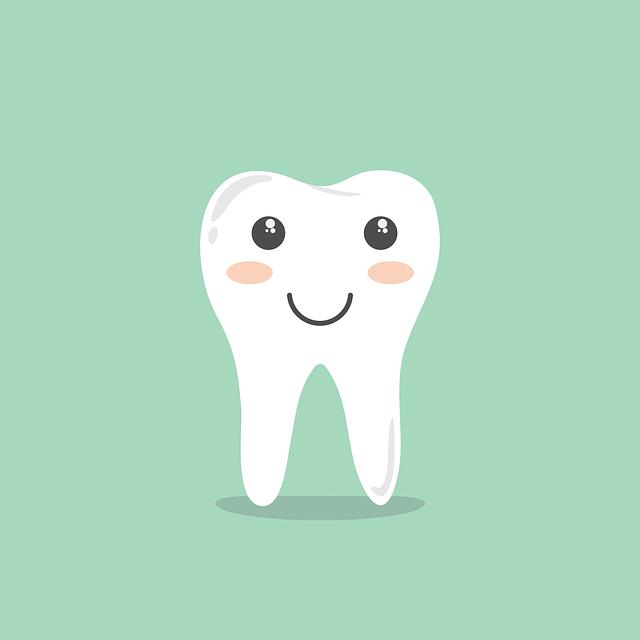How Often Should I Use Salt Water After Tooth Extraction: Insights
When it comes to tooth extraction, the healing process is of utmost importance. One common recommendation for post-extraction care is the use of salt water rinses. But how often should you actually use this simple yet effective remedy? In this article, we will provide you with insights and guidance on the optimal frequency of using salt water after tooth extraction. Whether you’re a dental novice or a seasoned patient, we’ll equip you with the knowledge needed to promote a speedy and hassle-free recovery. So, let’s dive in and debunk the mystery surrounding salt water rinses post tooth extraction!
1. Understanding the Role of Salt Water in Post-Tooth Extraction Care
The use of salt water solution, also known as saline, is an integral part of post-tooth extraction care. This simple yet effective solution can aid in the healing process and reduce discomfort. Here’s why salt water is beneficial:
- Antiseptic properties: Salt water acts as a natural antiseptic, helping to cleanse the area around the extraction site. This can prevent infection and promote faster healing.
- Reduces swelling: Salt water has a soothing effect and can reduce swelling and inflammation in the gums and surrounding tissues. Swishing with salt water can provide relief and promote healing.
- Removes debris: Salt water can help remove any debris or food particles that may have accumulated around the extraction site. This prevents bacterial growth and further complications.
- Easy to make and use: Creating a salt water solution is quick and simple. Just mix half a teaspoon of salt in eight ounces of warm water, and you have a homemade saline rinse ready for use.
Remember to use the salt water rinse gently, swishing it around your mouth for about 30 seconds before spitting it out. Avoid forcefully spitting or rinsing too vigorously, as this may disrupt the formation of a blood clot at the extraction site. Incorporating salt water rinses into your post-tooth extraction care routine can greatly contribute to a smooth recovery process.

2. Optimal Frequency: How Often Should You Use Salt Water After Tooth Extraction?
After a tooth extraction, using salt water can aid in the healing process and prevent infection. However, it is important to use salt water in the optimal frequency to ensure maximum benefits. Here’s a guide on how often you should use salt water after a tooth extraction:
1. First 24 hours: During the first day after the extraction, it is recommended to avoid rinsing your mouth with salt water. This allows the blood clot to form and stabilize, promoting healing and minimizing the risk of a dry socket.
2. 24-48 hours: Starting from the second day, you can begin gently rinsing your mouth with salt water. Mix half a teaspoon of salt in eight ounces of warm water. Rinse your mouth with this solution 2-3 times a day, after meals and before bed. Be gentle to avoid dislodging the blood clot.
3. Days 3-7: As the days progress, continue rinsing your mouth with salt water 2-3 times a day. This will help keep the extraction site clean and prevent infection. Remember to use the same salt-to-water ratio as mentioned earlier.
4. Beyond the first week: After the first week, you can gradually reduce the frequency of salt water rinses. However, it’s still beneficial to continue using salt water once a day for the next 1-2 weeks to ensure proper healing.
By following this optimal frequency, you can effectively promote healing and maintain good oral hygiene after a tooth extraction. Remember to consult with your dentist for personalized instructions and advice.

3. The Science Behind Salt Water Rinses: Benefits and Considerations for Healing
Salt water rinses have long been touted as a natural remedy for oral health issues, with their benefits backed by scientific evidence. Here are some key benefits and considerations to keep in mind when using salt water rinses for healing:
- Reduced inflammation: Salt water rinses can help reduce inflammation in the mouth, particularly in cases of gum disease or oral infections. The salt acts as a natural disinfectant, killing harmful bacteria and promoting healing.
- Improved wound healing: The saline solution created by the salt water rinse can help accelerate the healing process for oral wounds, such as mouth sores or post-surgical sites. It creates an environment that is less favorable for bacteria to thrive, allowing the body to focus on repairing the damaged tissue.
- Pain relief: Salt water rinses can provide temporary relief from oral discomfort and pain associated with conditions like toothaches or sore throats. The rinse helps to cleanse the affected area and soothe inflammation, providing a sense of relief.
While salt water rinses offer numerous benefits, there are a few important considerations to keep in mind:
- Proper dilution: It is crucial to prepare the saline solution with the correct concentration of salt. Too much salt can be harsh on oral tissues, while too little may not provide the desired effects. A general guideline is to use about half a teaspoon of salt in a cup of warm water.
- Frequency and duration: Salt water rinses are generally recommended to be performed two to three times a day, or as advised by a healthcare professional. It is essential to follow the recommended duration of rinsing, usually around 30 seconds, to achieve optimal results.
- Temporary solution: While salt water rinses can aid in healing, they are not a substitute for professional dental care. It is essential to consult a dentist if symptoms persist or worsen.
By understanding the science behind salt water rinses and considering their benefits and proper usage, individuals can effectively incorporate this natural remedy into their oral care routine for healing purposes.

4. Finding Balance: Striking the Right Frequency for Salt Water Rinse After Tooth Extraction
After a tooth extraction, a salt water rinse can be an effective way to promote healing and prevent infection. However, finding the right frequency for this rinse is crucial to strike a balance between effectiveness and avoiding any potential side effects. Here are some key considerations to keep in mind:
1. Follow your dentist’s instructions: Your dentist will provide specific guidelines on how often you should perform a salt water rinse after your tooth extraction. It is important to follow these instructions carefully to ensure optimal healing.
2. Start with a gentle rinse: Immediately after the extraction, a gentle salt water rinse can be performed every 2 to 3 hours for the first 24 hours. This frequency helps to keep the extraction site clean and minimize the risk of infection.
3. Gradually reduce the frequency: As the first 24 hours pass, it is generally recommended to gradually reduce the frequency of salt water rinses. This can be done by performing the rinse every 4 to 6 hours for the next few days. However, it is essential to consult your dentist for specific instructions based on your individual case.
4. Listen to your body: While following your dentist’s recommendations is important, it is equally crucial to pay attention to your body’s response. If you experience any increased pain, swelling, or discomfort after performing the salt water rinse, it may indicate that you are rinsing too frequently. In such cases, it is best to consult your dentist for further guidance.
By striking the right frequency for salt water rinses after a tooth extraction, you can support the healing process while minimizing the risk of complications. Remember to maintain good oral hygiene practices, follow your dentist’s instructions, and reach out to them if you have any concerns or questions.
5. Tailoring Salt Water Rinse Routine to Your Individual Healing Process
When it comes to healing after oral surgery or managing oral conditions, tailoring your salt water rinse routine to your individual needs is crucial for optimal results. Here are some key points to consider:
- Salinity level: It is important to maintain the correct salinity level in your salt water rinse. A general guideline is to use about half a teaspoon of salt per cup of warm water for a mild solution. However, you may need to adjust this ratio based on your personal preferences and the level of discomfort you experience.
- Frequency: The frequency of your salt water rinses will depend on your specific healing process. In the initial stages, it is generally recommended to rinse every two to three hours or as advised by your healthcare professional. As your healing progresses, you can gradually reduce the frequency to two to three times a day.
- Rinse duration: Each salt water rinse session should last for about 30 seconds to one minute. This duration allows the saline solution to effectively cleanse the affected area without causing irritation or dryness.
- Technique: To ensure maximum effectiveness, make sure to swish the salt water solution all around your mouth, including the surgical site or affected area. Gently move the solution between your teeth and around your gums, being careful not to gargle or swallow the solution.
- Post-rinse care: After each salt water rinse, avoid eating or drinking for at least 30 minutes to allow the healing properties of the solution to take effect. It is also important to clean your mouth gently with a soft-bristle toothbrush and follow any additional post-rinse instructions provided by your healthcare professional.
By tailoring your salt water rinse routine to suit your individual healing process, you can promote faster recovery, reduce discomfort, and maintain excellent oral hygiene. Remember to consult your healthcare professional for personalized advice based on your specific condition or procedure.
6. Expert Recommendations: What Dentists Suggest for Salt Water Rinse Frequency
When it comes to salt water rinses, dentists often offer valuable insights on the recommended frequency for optimal oral health. Here are some expert recommendations to help you determine how often you should incorporate salt water rinses into your dental routine:
- General Maintenance: For most individuals, dentists suggest using a salt water rinse once or twice a day as part of their regular dental hygiene routine. This frequency helps maintain a healthy oral environment and promotes gum health.
- Post-Dental Procedures: After dental procedures such as tooth extractions or oral surgeries, dentists often recommend using a salt water rinse multiple times a day to reduce swelling, minimize discomfort, and promote healing. It is essential to follow your dentist’s specific instructions regarding rinse frequency in these cases.
- As Needed: Additionally, you may consider using a salt water rinse as needed when experiencing specific oral issues such as mouth sores, gingivitis, or bad breath. In such cases, rinsing two to three times a day can provide relief and aid in the healing process.
Remember, while these recommendations are generally effective, it is always best to consult with your dentist regarding your specific oral health needs. They can provide personalized guidance and ensure that salt water rinsing is a suitable addition to your dental care routine.
7. Potential Risks and Side Effects: Using Salt Water Rinse with Caution
When using a salt water rinse, it is important to be aware of potential risks and side effects to ensure your safety and well-being. While this natural remedy can be effective in soothing oral issues, it should be used with caution.
Here are some potential risks and side effects to keep in mind:
- Sensitivity: Some individuals may experience increased sensitivity to salt water rinses, especially if they have sensitive gums or teeth. If you notice any discomfort or pain while using the rinse, it is recommended to discontinue use and consult with a dental professional.
- Excessive use: Using a salt water rinse too frequently or for extended periods of time can lead to an imbalance in oral flora. This imbalance can disrupt the natural pH levels in your mouth and potentially cause further oral issues. It is important to follow recommended usage guidelines and not overuse the rinse.
- Dehydration: Salt water rinses can have a drying effect on your mouth, which may contribute to dehydration if used excessively. It is crucial to maintain proper hydration by drinking enough water throughout the day, especially if you regularly use salt water rinses.
By being mindful of these potential risks and side effects, you can ensure a safe and effective use of salt water rinses for oral care. If you have any concerns or questions, it is always best to consult with a dental professional who can provide personalized advice.
8. Enhancing Post-Extraction Recovery: Supplementing Salt Water Rinse with Other Oral Care Practices
After undergoing a tooth extraction, it is crucial to take proper care of the extraction site to promote faster healing and minimize the risk of complications. While a saltwater rinse is a common practice for post-extraction care, supplementing it with other oral care practices can greatly enhance the recovery process. Here are some additional techniques you can incorporate into your routine:
1. Gentle brushing: It is essential to maintain good oral hygiene even after a tooth extraction. Gently brush the remaining teeth, avoiding the extraction site, to remove plaque and bacteria that can hinder the healing process.
2. Use an antimicrobial mouthwash: Consider using an antimicrobial mouthwash recommended by your dentist. This can help reduce the risk of infection and keep the extraction site clean. Be sure to follow the instructions provided and rinse your mouth gently.
3. Apply cold compress: To minimize swelling and discomfort, apply a cold compress to the affected area for 10-15 minutes at a time. This can help reduce inflammation and provide relief.
By incorporating these additional oral care practices alongside a saltwater rinse, you can enhance your post-extraction recovery. However, it’s important to consult with your dentist for personalized advice based on your specific situation.
9. Maintaining Oral Hygiene: Incorporating Salt Water Rinse into Your Daily Routine
Oral hygiene is an essential part of maintaining a healthy mouth and preventing dental issues. One effective practice that can be easily incorporated into your daily routine is a salt water rinse. This natural remedy has been used for centuries due to its numerous benefits for oral health.
A salt water rinse can help to:
- Reduce inflammation and soothe gum irritation
- Alleviate bad breath and neutralize bacteria
- Aid in the healing process of oral sores and wounds
- Prevent the buildup of plaque and tartar
To incorporate a salt water rinse into your daily routine, follow these simple steps:
- Mix ½ teaspoon of salt with 8 ounces of warm water.
- Stir the mixture until the salt is dissolved.
- Take a small sip of the solution and swish it around your mouth for 30-60 seconds.
- Spit out the solution and rinse your mouth with plain water.
- Repeat this process 2-3 times a day, preferably after brushing your teeth.
Remember to always use salt water rinse as a complement to your regular oral hygiene routine, which should include brushing twice a day, flossing, and visiting your dentist regularly. By incorporating a salt water rinse into your daily routine, you can promote better oral health and enjoy the benefits of a fresh and clean mouth.
10. Post-Extraction Oral Health: A Comprehensive Approach to Promote Healing and Well-being
After undergoing a tooth extraction, it is important to prioritize your oral health to ensure proper healing and overall well-being. Following a comprehensive approach can significantly promote healing and prevent any complications that may arise. Here are some key steps to take:
- Keep the extraction site clean: Gently rinse your mouth with warm saltwater 24 hours after the procedure. This helps reduce swelling and prevents infection. Avoid brushing the extraction site for the first 24 hours to allow proper clot formation.
- Manage pain and swelling: Use over-the-counter pain relievers recommended by your dentist to alleviate any discomfort. Applying an ice pack on the outside of your cheek near the extraction site can help reduce swelling.
- Stick to a soft diet: For the first few days, eat soft and lukewarm foods like yogurt, mashed potatoes, and soups. Avoid hot, spicy, or crunchy foods that can irritate the extraction site.
- Practice good oral hygiene: Brush your teeth gently twice a day, being careful around the extraction site. Use a soft-bristle toothbrush and a mild, non-alcoholic mouthwash recommended by your dentist.
- Avoid smoking and drinking alcohol: Smoking and consuming alcohol can delay healing and increase the risk of complications. It is best to refrain from these habits during the post-extraction healing period.
- Attend follow-up appointments: Regularly visit your dentist for post-extraction check-ups to ensure proper healing and address any concerns or complications that may arise.
By following these comprehensive guidelines, you can support the healing process, minimize discomfort, and maintain your oral health after a tooth extraction. Remember, each individual may have unique circumstances, so it’s essential to consult with your dentist for personalized advice.
Frequently Asked Questions
Q: How often should I use salt water after tooth extraction?
A: It is recommended to use salt water after tooth extraction at least two to three times a day.
Q: Why is salt water beneficial for tooth extraction healing?
A: Salt water serves as a natural antiseptic, helping to prevent infection and reduce swelling, promoting faster healing of the extraction site.
Q: How do I prepare salt water for rinsing after tooth extraction?
A: To prepare salt water, mix one teaspoon of salt with eight ounces of warm water. Stir until the salt is completely dissolved.
Q: Can I use any type of salt for the salt water rinse?
A: It is recommended to use non-iodized salt for the salt water rinse after tooth extraction. Iodized salt may cause irritation or discomfort.
Q: How should I rinse my mouth with salt water after tooth extraction?
A: Gently swish the salt water solution in your mouth for about 30 seconds, making sure to reach the extraction site. Spit out the solution afterwards and avoid swallowing it.
Q: When should I start using salt water after tooth extraction?
A: You can start using salt water rinses 24 hours after the tooth extraction, unless instructed otherwise by your dentist.
Q: Are there any side effects of using salt water after tooth extraction?
A: When used correctly, salt water rinses usually have no side effects. However, if you experience any unusual pain, swelling, or prolonged bleeding, consult your dentist immediately.
Q: How long should I continue using salt water after tooth extraction?
A: It is generally recommended to continue using salt water rinses for about a week after the tooth extraction or until your dentist advises otherwise.
Q: Can I replace salt water with mouthwash after tooth extraction?
A: While mouthwash may provide some benefits, salt water is a more natural and effective option for promoting healing and reducing the risk of infection after tooth extraction. It is best to consult with your dentist before switching to mouthwash.
Q: Is using salt water after tooth extraction necessary for everyone?
A: While the use of salt water rinses is not mandatory, it is highly recommended by dental professionals as a simple and effective way to aid in the healing process after tooth extraction. It can significantly reduce the risk of complications and promote optimal healing.
Insights and Conclusions
In conclusion, understanding how often to use salt water after a tooth extraction is crucial for a successful recovery. Here are the key takeaways from this article:
1. Salt water rinses can significantly aid in the healing process after a tooth extraction. The saline solution helps reduce swelling, alleviate pain, and prevent infection.
2. It is recommended to start rinsing with salt water 24 hours after the extraction. This allows the initial blood clot to form and stabilize, minimizing the risk of complications.
3. The ideal frequency for salt water rinses is 2-3 times a day. Be sure to rinse gently, swishing the solution around the mouth for about 30 seconds before spitting it out.
4. Always use lukewarm water and dissolve half a teaspoon of salt in an 8-ounce glass. This creates a balanced saline solution that is effective without being too harsh on the healing tissues.
5. Remember to continue salt water rinses for at least a week or as advised by your dentist. Consistency is key for optimal healing and reducing the chances of infection.
By following these guidelines, you can promote a faster and smoother recovery after a tooth extraction. As always, consult with your dentist for personalized advice and instructions tailored to your specific situation.





